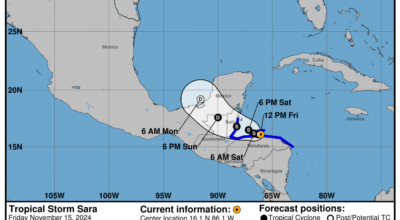Be prepared for dense fog in central North Carolina until Thursday morning
Published 6:38 am Thursday, October 3, 2024
A report was issued from the National Weather Service on Thursday at 6:29 a.m. for dense fog until 10 a.m. The alert is for Person, Granville, Vance, Warren, Halifax, Forsyth, Guilford, Alamance, Orange, Durham, Franklin, Nash, Edgecombe, Davidson, Randolph, Chatham, Wake, Johnston, Wilson, Stanly, Montgomery, Moore, Lee, Harnett, Wayne, Anson, Richmond, Scotland, Hoke, Cumberland and Sampson counties.
“Areas of fog, dense in some locations, have developed across portions of central NC. Visibilities could lower to below one-quarter of a mile or less at times. Motorists should remain alert for a rapidly changing visibilities over short distances. If driving, slow down and leave extra distance ahead of you in case a sudden stop is needed. Visibilities will start to improve between 9 and 10 am,” says the NWS.

Navigating fog: Safety tips by the NWS
If you must venture out in foggy conditions, keep these safety tips from the NWS in mind:
Reduce speed:
- Slow down and allocate extra time for your trip to reach your destination safely.
Visibility priority:
- Ensure your vehicle is visible to others by using low-beam headlights, which automatically activate your taillights. Utilize fog lights if your vehicle is equipped with them.
Avoid high-beams:
- Refrain from using high-beam headlights, as they create glare that impairs your visibility on the road.
Keep a safe distance:
- Leave a safe distance between you and the vehicle in front of you to account for sudden stops or changes in the traffic pattern.
Stay in your lane:
- Use the road’s lane markings as a guide to remaining in the correct lane.
Zero visibility strategy:
- In cases of near-zero visibility due to dense fog, initiate your hazard lights and locate a secure spot, such as a nearby business parking area, to pull over and come to a halt.
No parking options:
- If there is no parking lot or driveway to pull into, pull your vehicle off to the side of the road as far as possible. Once you come to a stop, turn off all lights except your hazard flashing lights, set the emergency brake, and take your foot off of the brake pedal to be sure the tail lights are not illuminated so that other drivers don’t mistakenly run into you.
By adhering to these NWS recommendations, you can navigate foggy conditions more safely, reducing the risk of accidents and ensuring your well-being.
Source: The National Weather Service





